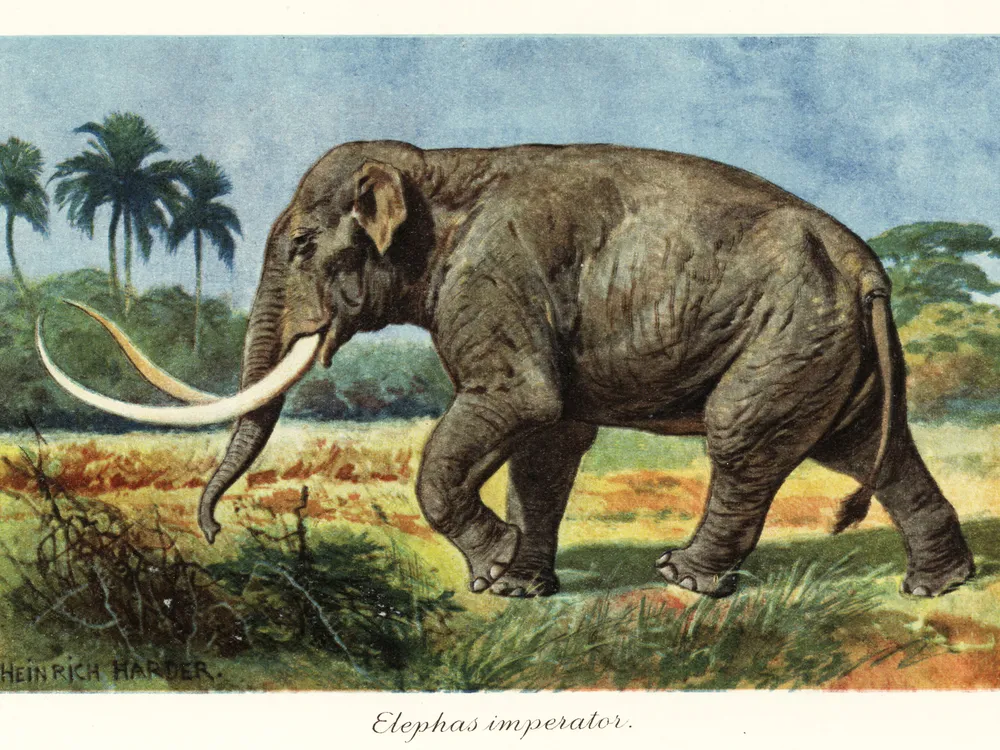20,000-Year-Old Columbian Mammoth Bones Discovered in Texas
While fishing at an undisclosed lake, Sabrina Solomon slipped and fell—and came face to face with the remains

Sabrina Solomon was fishing with a friend in Central Texas earlier this summer when she stumbled upon the remains of a 20,000-year-old mammoth—literally.
“I was walking up that hill with all the clay, it was really wet and slippery and I ended up falling, coming face to face with the specimen,” Solomon tells KWTX’s Isabella Quintanilla.
When Solomon took a closer look at the object sticking out of the ground, she realized it probably wasn’t an ordinary rock—it looked more like a spine. So, she got in touch with local authorities, who contacted experts at Tarleton State University.
Kris Juntunen, a geoscientist at the university, traveled to the site and saw four to five inches of tusk protruding from the dirt. He recruited students, as well as staff from the Waco Mammoth National Monument and the U.S. Army Corps of Engineers, to help excavate the remains.
Not long after the group started digging, they found additional fossils: part of what is likely a skull, spine bones and part of an arm bone. They determined the bones belonged to a 40-year-old male Columbian mammoth, a large, extinct creature that once roamed North America during the Pleistocene (2.6 million to 11,700 years ago).
Once all of the remains are safely removed, they’ll be transported to Tarleton State for further study and preservation.
The exact location of the dig site is being kept secret to prevent tampering. Two of the mammoth’s teeths were removed from the site just before the team started excavating. But they were later returned to the Bosque County Sheriff’s Office.
Columbian mammoths (Mammuthus columbi) lived throughout the continent, possibly meandering as far south as Costa Rica. They stood up to 13 feet tall at the shoulders and weighed up to 20,000 pounds. Columbian mammoths were larger than woolly mammoths, and they were mostly hairless.
For years, paleontologists theorized that Columbian mammoth evolved before woolly mammoths. But, in 2021, a team studied DNA from mammoth molars that were 700,000, 1.1 million and 1.2 million years old. The analysis showed that Columbian mammoths were a hybrid species—a cross between woolly mammoths and another, unknown mammoth lineage.
Columbian mammoths, woolly mammoths and mastodons began disappearing toward the end of the last Ice Age, with the last known surviving group dying on Wrangel Island off the Arcrtic coast or modern-day Russia some 6,000 years ago. Their modern descendants—African and Asian elephants—live on today.
Many Columbian mammoth fossils have been unearthed in Central Texas. In 2015, the Obama administration established Waco Mammoth National Monument, a five-acre swath between the Bosque and Brazos rivers. The national monument protects the first and only known evidence of a nursery herd of Columbian mammoths, a group of at least six adult females and ten juveniles. The animals all died in a single, catastrophic event—possibly, a flash flood or a mudslide.
In addition to Texas, Columbian mammoth fossils have been found in Nevada, California, Florida, Minnesota, Washington, South Dakota and other states.
“It’s so hard to imagine them walking through your backyard, so every time we find one in your backyard, it kind of triggers the imagination,” Lindsey Yann, the paleontologist at Waco Mammoth National Monument, tells KWTX. “And even a small find like this and the other finds in this area, they really tell us about the paleontological history of this area.”



